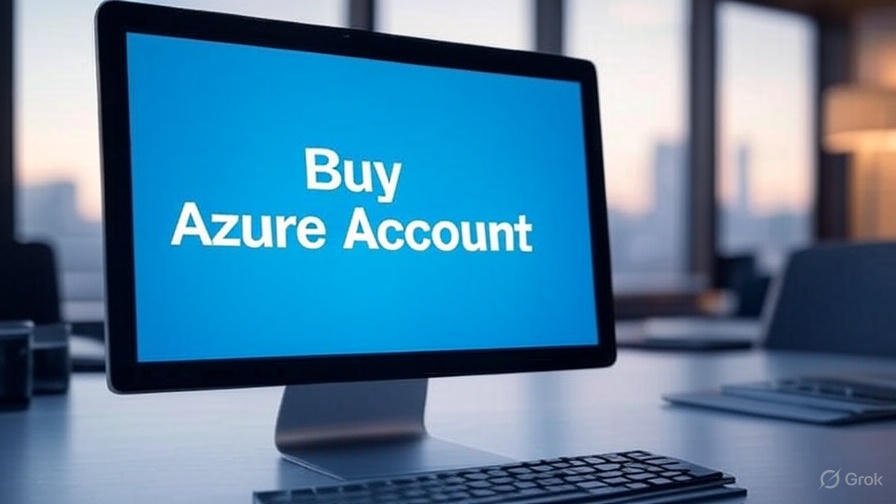In the fast-paced world of cloud computing, Microsoft Azure stands out as a powerhouse platform for businesses, developers, and innovators. With the global cloud computing market on track to surpass $1 trillion in 2025, demand for Azure services is at an all-time high. However, this growth has fueled a spike in fraudulent schemes, including sophisticated phishing attacks targeting cloud credentials. This comprehensive news guide, drawing from the latest industry insights and security advisories, equips you with the knowledge to safely purchase buy Azure account online—if you must—while emphasizing official alternatives to avoid pitfalls.
Understanding Microsoft Azure: Features and Appeal
Microsoft Azure is a robust cloud platform offering over 200 services, from virtual machines and AI tools to storage and databases, all hosted across a vast global network. It’s designed for scalability, enabling users to deploy applications seamlessly without heavy upfront investments. Typically, users create accounts directly via the Azure portal, starting with a free tier that includes $200 in credits for 30 days, plus always-free services like certain databases and bandwidth allocations.
Why opt to purchase an Azure account? Some seek pre-loaded credits, bypassed regional restrictions, or immediate high-limits setups, especially for testing or in areas with signup barriers. Yet, this practice often contravenes Microsoft’s Online Subscription Agreement, which prohibits account transfers or sales, potentially resulting in suspensions or legal repercussions. In 2025, with enhanced security measures like mandatory multi-factor authentication (MFA) rolled out since October 2024 for all Azure sign-ins, third-party purchases carry even greater risks amid a reported surge in cloud-related phishing scams.
Navigating the Risks: Scams and Security Threats in 2025
The allure of quick Azure access has spawned a black market rife with dangers. Phishing remains a top threat, with around 80% of campaigns aimed at stealing cloud credentials. Other perils include:
- Imposter Vendors: Fake sellers on marketplaces vanish post-payment, often using AI-generated sites to mimic legitimacy.
- Compromised Credentials: Purchased accounts may be pre-hacked, leading to unauthorized charges or data leaks.
- Policy Violations: Microsoft actively monitors for misuse, with potential account bans.
- Financial Fraud: Scammers exploit payment details, contributing to a 340% rise in financial scam risks in Q2 2025.
Recent data shows phishing incidents escalating, with AI-powered impersonations and MFA fatigue attacks topping 2025’s threat list. Microsoft’s enforcement of MFA since late 2024 has bolstered defenses, but buyers must exercise extreme caution. For more on cloud security trends, check out Microsoft’s Security Blog.
Step-by-Step Guide: How to Purchase an Azure Account Securely
While we strongly recommend official signups, here’s a meticulous process for those exploring third-party options, informed by expert security practices.
- Conduct In-Depth Vendor Research: Begin with trusted platforms like specialized cloud forums or Reddit communities (e.g., r/azure). Search for “Azure account reviews” and prioritize sellers with verifiable histories. Avoid unsolicited offers on social media.
- Authenticate Vendor Credibility: Verify domain age via WHOIS, check for business licenses, and demand transaction proofs. Look for Microsoft Partner Network affiliations. In 2025, use tools like Trustpilot for authentic reviews.
- Assess Account Specifications and Costs: Genuine listings detail credits (e.g., $200), regions, and limits. Expect prices from $50-$200; suspiciously low offers signal scams.
- Employ Secure Transaction Methods: Use credit cards or PayPal for buyer protection—never wire transfers or crypto. Ensure HTTPS on sites and enable transaction alerts.
- Finalize and Validate the Purchase: Upon receipt, log in officially, reset credentials, and activate MFA. Test services and check billing to confirm legitimacy.
- Ongoing Account Protection: Set up activity monitoring, use strong passwords, and integrate with Entra ID for advanced security.
This methodical approach, taking 1-3 days, aligns with FDIC guidelines on avoiding online fraud. Learn more about secure online practices at FDIC Consumer News.
Expert Tips to Dodge Scams in Online Account Purchases
Bolster your defenses with these 2025-specific strategies:
- Scrutinize Reviews: Rely on sites like Sitejabber; dismiss generic feedback.
- Ignore High-Pressure Sales: Scammers push urgency; legitimate deals allow time.
- Fortify with MFA and Monitoring: Enable everywhere and review statements weekly.
- Verify Via Official Channels: Contact Microsoft support for guidance on suspicious offers.
- Stay Updated on Threats: Follow alerts on emerging AI scams and QR code phishing.
These tips, echoed in Experian’s 2025 scam report, can prevent most fraud attempts.
Safer Alternatives: Official Azure Onboarding and Upgrades
Bypass risks by signing up directly at azure.microsoft.com/free. Provide a phone, card (for verification only—no charges), and account details for instant access to $200 credits. Students get $100 without cards via Azure for Students.
Upgrade effortlessly to pay-as-you-go, preserving credits, or explore Azure Marketplace for partner solutions.
Final Thoughts: Secure Your Cloud Future
In 2025’s dynamic cloud ecosystem, attempting to purchase an Azure account demands unwavering vigilance against evolving threats. This guide’s steps and tips, grounded in authoritative sources, aim to empower safe decisions. Prioritize official paths for trustworthiness and support. For ongoing cloud news, bookmark our site and engage below.
